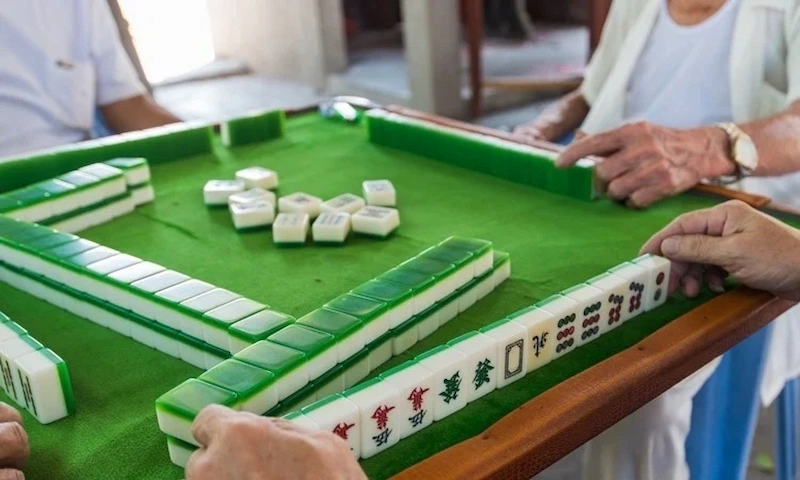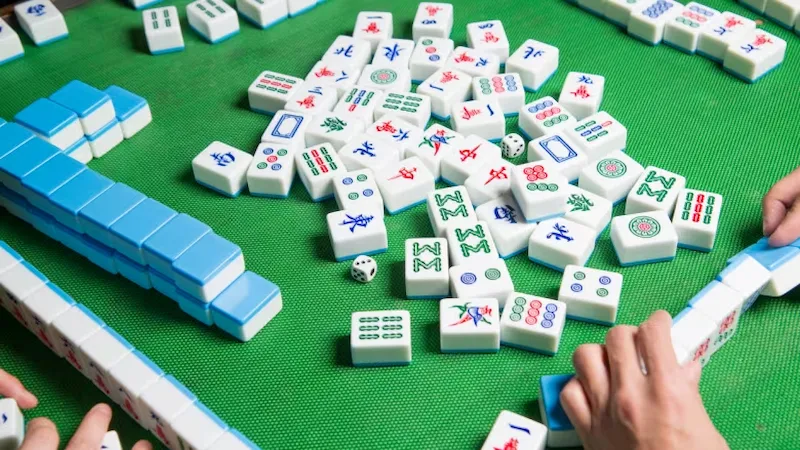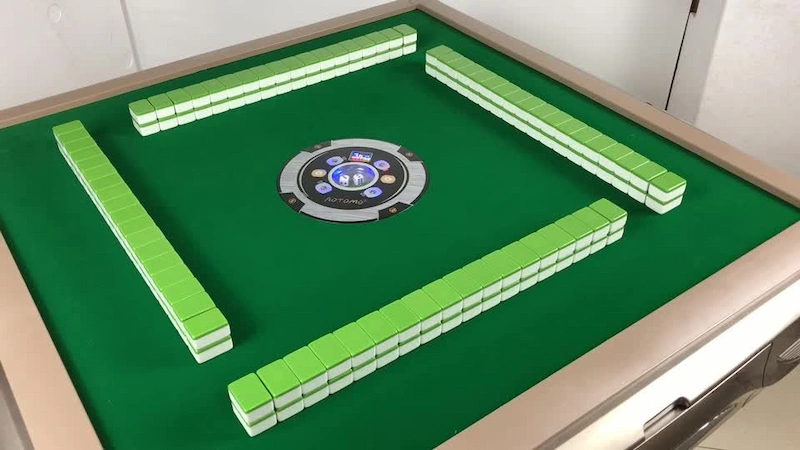Mahjong is a classic intellectual casino game that has existed for hundreds of years around the world. The way to know how to play mahjong is simple but no less sophisticated, this game always attracts the attention and love of many people. In this article, Lodi777 will guide you on how to play mahjong, as well as provide some useful tips to help you become a proficient mahjong player.
What is Mahjong?

Mahjong is a folk card game originating from China, also known by its English name Mahjong. However, the word Mahjong also means sparrow – shown through the symbol of a sparrow, which is the first card in the deck.
In Mahjong, players use a deck of cards made of horn, ivory or plastic to play, usually with 4 players. The goal of the game is to use tactics and reasoning skills to win the game, also known as “winning” or “hu.”
Mahjong tiles
A mahjong deck consists of 4 sets, each set includes 40 tiles, for a total of 160 tiles.
The types of tiles in a mahjong set include:
Suit tiles
Includes 108 tiles, divided into 3 suits: Bamboo, Characters, and Dots. Each suit has 9 tiles numbered from 1 to 9, with 4 identical tiles of each number. Bamboo tiles depict bamboo stalks, starting with One Bamboo and going up to Nine Bamboo. Character tiles are numbered 1 to 9 in Chinese characters, while Dot tiles are marked with circular dots.
Honor tiles
Includes 28 tiles, consisting of Four Winds (East, West, South, North) and Red, Green, and White Dragons.
Bonus tiles:
Includes 16 tiles divided into 4 small sets: Seasons, Flowers, Winds, and Dragons. Each set has 4 identical tiles. Seasons include Spring, Summer, Autumn, and Winter. Flowers comprise the Four Gentlemen, namely Plum Blossom, Orchid, Chrysanthemum, and Bamboo. Winds are represented by East, South, West, and North. Dragons are Red, Green, and White, with an additional tile for the seat wind or prevailing wind. Note: Winds and Dragons can be replaced by other sets like the Eight Scholars or Fisherman, Woodcutter, Farmer, and Scholar, depending on the version you play..
Joker tiles:
Includes two tiles, one red and one green, capable of replacing other tiles.
Instructions on how to play mahjong

How to choose a seat
The sitting position in the game can influence the game’s dynamics. Seats are usually chosen in the following steps:
- Step 1: Take the four East, West, South, and North wind tiles, shuffle them, and stack them randomly.
- Step 2: Roll two dice. The player with the highest score takes the top tile from the stack. The player with the next highest score takes the next tile, and so on.
- Step 3: The player who draws the East Wind tile, called the East Player, has the privilege of choosing their seat and sitting direction. The South Player sits to the right of the East Player, the West Player sits to the right of the South Player, and the North Player sits to the right of the West Player.
How to deal cards
According to how to play Mahjong rules, before dealing, the tiles must be placed face down on the table. Players then shuffle the tiles and arrange them into two rows. Each row has a total of 18 tiles stacked on top of each other and pushed forward to form a wall.
The East Player, also known as the “Dealer,” will roll 2 or 3 dice to determine the starting point for dealing. With 160 tiles in the set, each player receives 13 tiles. The dealer starts with an extra 14th tile. Players arrange their tiles so they can see them but others cannot.
Ways to win (Hu)
In Mahjong, there are many different winning hands (hu), each with its own name and point value. Some common winning hands include:
- Ping Hu: A hand with four concealed pungs (three-of-a-kind sets) and a pair.
- All Pungs: A hand with four pungs and a pair.
- All Chows: A hand with four chows (three consecutive numbered tiles in the same suit) and a pair.
- Mixed One Suit: A hand with all tiles from one suit and honor tiles.
- Thirteen Orphans: A hand with one of each terminal and honor tile, plus one duplicate.
- The Great Three Dragons: A hand with three pungs of dragons.
- The Lesser Three Dragons: A hand with two pungs of dragons and a pair of dragons.
- The Great Four Winds: A hand with four pungs of winds.
- The Lesser Four Winds: A hand with three pungs of winds and a pair of winds.
How to calculate points
When playing Mahjong, “fan” is used as the unit of scoring.
The following fan values can be achieved:
- 0 fan: Winning a Mahjong hand normally.
- 1 fan: Having four consecutive tiles of the same suit in hand; winning by self-draw; having a pair of concealed or melded pungs of the same suit; or sitting in the same position as the player who has the same flower tile.
- 2 fan: Winning hand consists of four flower tiles of the same type; winning by drawing the last tile; having a pair of concealed or melded pungs of the same suit and wind.
- 3 fan: Winning hand consists of three pungs of winds and three pungs of dragons; winning by arranging three tiles of the same type in a row.
- 6 fan: Winning hand consists of four pungs of winds (Lesser Four Winds); winning by having four pungs; or winning by drawing all pungs.
- 8 fan: Winning hand consists of four pungs of winds (Greater Four Winds); winning by having four pungs and drawing only wind or dragon tiles.
Ways to play mahjong

Mahjong is a very disciplined game which requires skill, high level concentration, deductive reasoning and some bright strategic thinking. Mahjong is played in a variety of ways depending on regional rules, and even the number of tiles can change from place to place. Below are some of the most common forms of it and how to play Mahjong of each typer:
- Chinese Mahjong: Perhaps the most common variant and the style that always comes to mind when one thinks of Mahjong. There is a hu scoring system and the game uses point-based method-same as all other mahjong games, different combinations of winning (hu) have their own points.
- Japanese Mahjong (Riichi): Similar to Chinese Mahjong, this variation is played with a Japanese set of 136 tiles. However, the scoring system and winning combinations (yaku) differ from Chinese Mahjong. It also features the “riichi” declaration, which adds a strategic element to the game.
- Pair Mahjong: In this version, the players are separated into 2 teams The ceramic tiles separated relying on sets; each team plays associated with one collection. The team members can work, collaborate or play on their own to win their team.
- Special MahJong: This is a no-brainer, and these are modifications that involve distinctive rules, so it feels like you are playing with a spin on the formerly dedicated games as well. For instance, mahjong with rough doubles, double-draw mahjong start big or team-mahjong.
Mahjong is an engaging and popular game among intellectuals. It requires players to have knowledge of the rules, analytical and evaluative skills, and the ability to read opponents’ minds. The above article has provided you with the basics of how to play mahjong. We hope you have enjoyable moments playing Mahjong!
